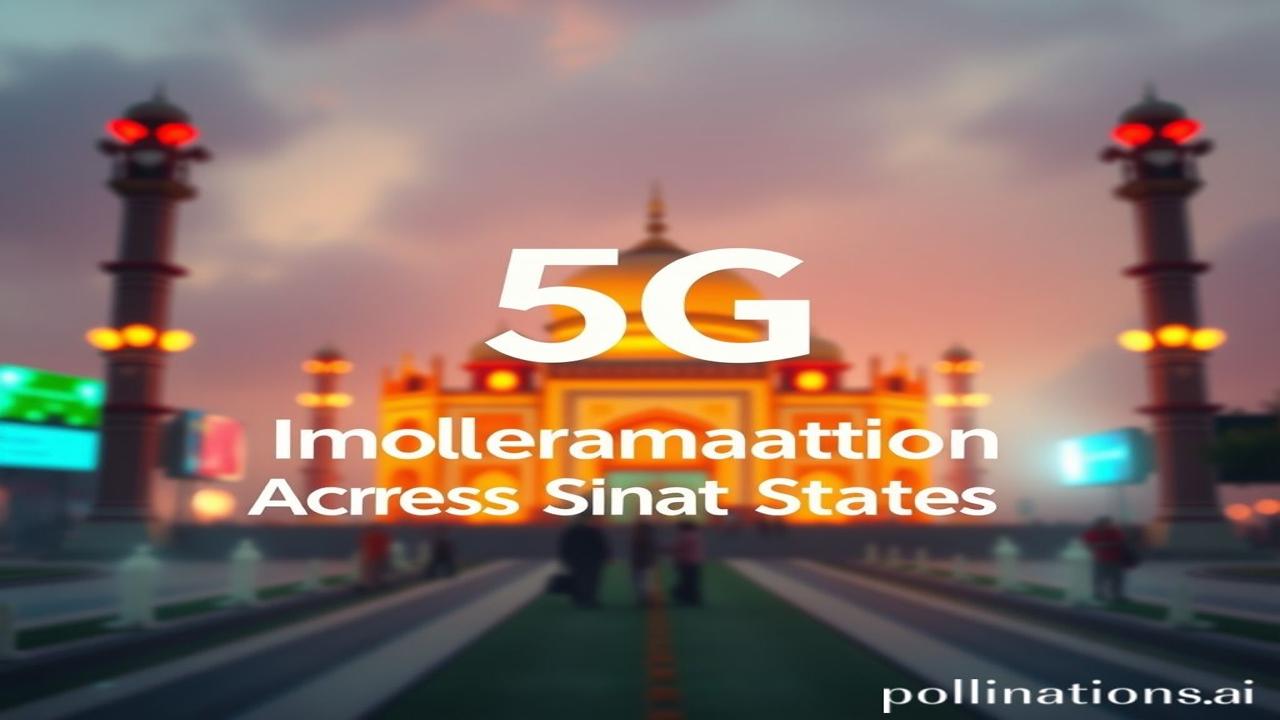5G in India: Kya Badlega, Kaise Badlega?
“Kabhi socha hai, ek signal ki raftaar, kaise ek desh ka bhavishya badal sakti hai? Jaise purani galiyon mein deepak ki roshni andhere ko cheer deti hai, waise hi 5G India ke har kone mein ek nayi subah laa raha hai.”
5G Kya Hai, Bhai? (What is 5G, Dude?)
Okay, so simple shabdon mein, 5G is the fifth generation of wireless technology. Think of it as super-fast internet on steroids. It’s not just about downloading movies faster; it’s about connecting devices, enabling new technologies like self-driving cars, remote surgery, and making ‘smart cities’ a real thing. 5G offers significantly faster speeds, lower latency (that delay you feel when you click something online), and the ability to connect a lot more devices at once.
Itihas Ki Ek Jhalak: 5G Kaise Aaya? (A Glimpse of History: How Did 5G Arrive?)
The story of 5G in India is relatively recent. While the world was talking about it for years, India got seriously into the game around 2022. Prime Minister Narendra Modi launched 5G services in India in October 2022. The auction of 5G spectrum took place earlier that year, paving the way for telecom operators like Jio and Airtel to roll out their networks. It’s important because India, a country with a massive digital divide, is hoping 5G will bridge the gap, allowing better access to education, healthcare, and economic opportunities. So, it’s not just tech; it’s a game-changer for social justice.
Zamini Sach: Log Aur Zindagi – 5G Se Kya Farq Padega? (Ground Reality: People and Life – How Will 5G Make a Difference?)
Imagine a farmer in a remote village. Before, he struggled to get accurate information about weather patterns or market prices. With 5G, he can use his smartphone to access real-time data, connect to agricultural experts via video conferencing, and even use drones to monitor his crops. Socho, a woman entrepreneur running a small business in a tier-2 city. She can now sell her products online globally, access online training programs, and collaborate with designers and manufacturers, all thanks to faster, more reliable internet.
Dialogue:
“Arre bhaiyya, yeh 5G kya kamaal karega?” asked Ramu, a local shopkeeper.
“Dekho Ramu, ab tum online payments fatafat le paoge. Customer khush toh tum bhi khush!” replied the Airtel representative, with a wink.
Dharohar Aur Pehchan: Bharatiyata Aur 5G (Heritage and Identity: Indianness and 5G)
How does 5G fit into India’s Bharatiyata (Indianness)? It’s about empowering our people, preserving our culture, and showcasing our innovation to the world. Imagine using 5G-enabled AR (Augmented Reality) to experience the Ajanta caves without physically traveling there. Or a doctor in Delhi performing remote surgery on a patient in a small town. 5G can help us connect with our roots, learn about our history, and create a brighter future, all while staying true to our values of innovation, inclusivity, and progress.
Implementational Challenges: Har Gulab Mein Kaante Hote Hain (Every Rose Has Thorns)
Implementation of 5G across India faces numerous challenges. Let’s dig deep into this:
Infrastructure Needs:
- Expensive Deployments: Setting up 5G networks requires massive investment in new infrastructure, including towers, fiber optic cables, and advanced equipment. This is a major financial hurdle for telecom companies.
- Spectrum Availability: Adequate spectrum availability is vital for 5G rollout. However, spectrum scarcity and high auction prices can slow down the process.
- Power Supply: 5G equipment demands a stable and reliable power supply, which is a challenge in many rural areas.
Affordability and Access:
- High Device Costs: 5G-enabled devices are more expensive, making them inaccessible to a large segment of the population, particularly in lower-income groups.
- Digital Literacy: Many Indians lack the necessary digital skills to fully utilize 5G technology, creating a digital divide.
- Affordable Data Plans: Telecom companies need to offer affordable data plans to ensure that the masses can benefit from 5G connectivity.
Regulatory Hurdles:
- Permits and Clearances: Obtaining permits and clearances for installing telecom infrastructure can be a lengthy and bureaucratic process.
- Data Privacy and Security: With increased connectivity comes heightened concerns about data privacy and security. Robust regulations are needed to protect user data.
- Standardization and Interoperability: Ensuring standardization and interoperability of 5G equipment is crucial for seamless network operation.
Rural Connectivity:
- Limited Infrastructure: Rural areas often lack the necessary infrastructure, such as fiber optic networks, to support 5G deployments.
- Return on Investment: Telecom companies may find it challenging to justify investments in rural areas due to lower population density and lower potential returns.
- Government Support: Government subsidies and incentives are needed to encourage telecom companies to expand 5G coverage in rural areas.
Majaedar Tathya Ya Bhram-Bhanjak (Fun Fact or Myth-Buster)
- Myth: 5G is only for smartphones.
- Truth: 5G is for everything! From smart homes to factories, to healthcare, and even agriculture. It will power a whole new world of connected devices and applications.
Drishya Aur Bhavnayein (Visual and Sensory Layer)
Imagine the bustling streets of Mumbai. The air smells of garam chai and the sea. The sounds of honking taxis and chattering crowds fill your ears. Now, picture that same scene, but everyone is using their phones to access lightning-fast internet, streaming videos, video calling their families, and paying for everything digitally. That’s the promise of 5G – a seamless, connected world where information flows freely and opportunities abound.
Antim Vichar Ya Uddharan (Closing Insight or Quote)
“Technology toh sirf ek hathiyar hai. Asli shakti toh insaan mein hai, jo use kaise istemal karta hai.” (Technology is just a tool. The real power lies in the human who uses it.) Let’s use 5G to build a stronger, more prosperous, and more connected India.
